

Wife Fidelma Cadmus
Queer Places:
Berkshire School, 245 N Undermountain Rd, Sheffield, MA 01257, USA
Harvard University (Ivy League), 2 Kirkland St, Cambridge, MA 02138
School of American Ballet, 637 Madison Ave, New York, NY 10022
128 E 19th St, New York, NY 10003, Stati Uniti
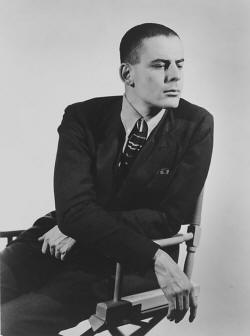 Lincoln Edward Kirstein (May 4, 1907 – January 5, 1996) was an American
writer, impresario, art connoisseur, philanthropist, and cultural figure in
New York City, noted especially as co-founder of the New York City Ballet. He
developed and sustained the company with his organizing ability and
fundraising for more than four decades, serving as the company's general
director from 1946 to 1989. According to the New York Times, he was "an
expert in many fields," organizing art exhibits and lecture tours in the same
years.[1] He was one of the Monument Men during World War II.
In his memoirs, the American dancer and choreographer Lincoln Kirstein
remembers having cut out and saved a picture in Vanity Fair, an etching by
Troy Kinney of Vaslav Nijinsky
in his costume for Les Sylphides. Kirstein rather coyly says of it, ‘this
etching became an icon to which I constantly referred as the sum of masculine
possibility’. It later turned out, when he met them, that both
Osbert Sitwell and
Richard Buckle remembered keeping
the same clipping; Kirstein is naïvely surprised by this.
Lincoln Edward Kirstein (May 4, 1907 – January 5, 1996) was an American
writer, impresario, art connoisseur, philanthropist, and cultural figure in
New York City, noted especially as co-founder of the New York City Ballet. He
developed and sustained the company with his organizing ability and
fundraising for more than four decades, serving as the company's general
director from 1946 to 1989. According to the New York Times, he was "an
expert in many fields," organizing art exhibits and lecture tours in the same
years.[1] He was one of the Monument Men during World War II.
In his memoirs, the American dancer and choreographer Lincoln Kirstein
remembers having cut out and saved a picture in Vanity Fair, an etching by
Troy Kinney of Vaslav Nijinsky
in his costume for Les Sylphides. Kirstein rather coyly says of it, ‘this
etching became an icon to which I constantly referred as the sum of masculine
possibility’. It later turned out, when he met them, that both
Osbert Sitwell and
Richard Buckle remembered keeping
the same clipping; Kirstein is naïvely surprised by this.
Lincoln Kirstein was born to Louis Kirstein, an optician, and Rose Stein. The family moved to Rochester, NY in 1901 and remained there until 1912, when they returned to Boston and Louis Kirstein became a partner in Filene's Department Store. Kirstein knew he was gay at an early age and had a long affair with a boy at the Berkshire School, which he attended after flunking out of Exeter. The two discussed if they might be homosexuals and neither seemed perturbed by it. When he finally entered Harvard, Kirstein had an active sex life, sleeping mostly with men, but also a few women.
Beginning in 1919, Kirstein kept a diary, continuing with the practice until the late 1930s. In writing a 2007 biography of Kirstein, The Worlds of Lincoln Kirstein, Martin Duberman drew on these diaries, as well as Kirstein's numerous letters, to gain insight to Kirstein's personal life.[10] Kirstein wrote about enjoying sex with various men, including Harvard undergraduates, sailors, street boys, and casual encounters in the showers at the 63rd St. YMCA. He had longer affairs with dancer Pete Martinez, artist Dan Maloney, and conservator Alexander Jensen Yow. Kirstein had both platonic relationships and many that started as casual sex and developed into long-term friendships.[15]
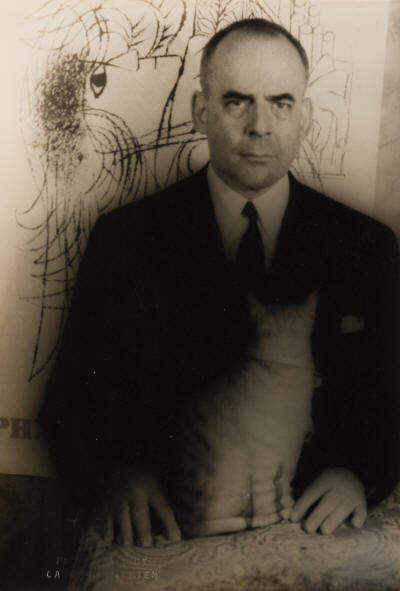
Lincoln Kirstein by Carl Van Vechten.
Silver print, the image measuring 231.8x158.8 mm; 9 1/8x6 1/4 inches, with Van Vechten's embossed blind stamp, on recto, and his copyright hand stamp, and the title, date, and inventory number, in ink, in an unknown hand, on verso. 1964.
English critic Clement Crisp said of Lincoln Kirstein (1907-1966), "He was one of those rare talents who touch the entire artistic life of their time. Ballet, film, literature, theatre, painting, sculpture, photography all occupied his attention.' Kirsten co-founded the New York City Ballet in 1946 and served as the organization's general director from 1946 until 1989.
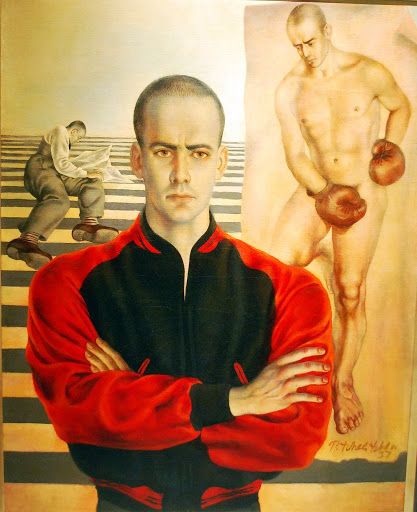
Lincoln Kirstein, by Pavel Tchelitchew
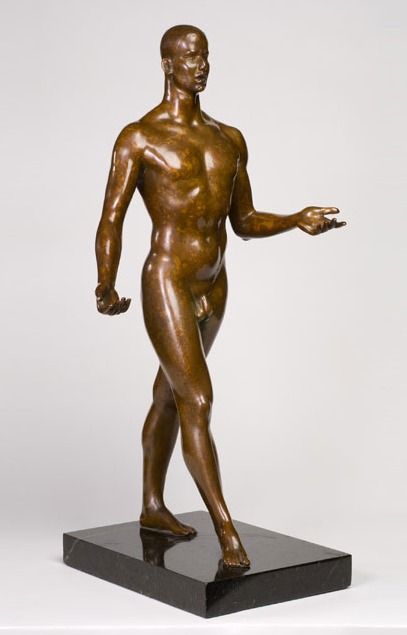
Lincoln Kirstein, by Gaston Lachaise
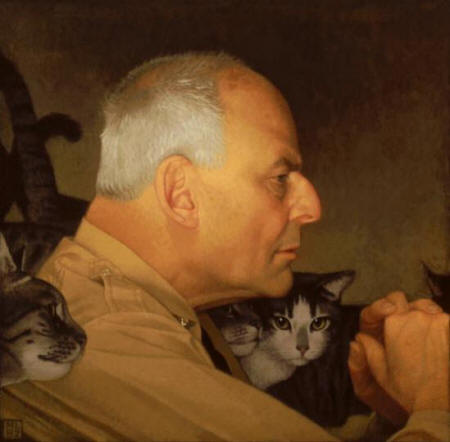
Profile with Cats; Lincoln Kirstein
1982
Acrylic on Rag Board, by Michael Leonard

Lincoln Kirstein
1941
Fidelma Cadmus Kirstein
On view at The Met Fifth Avenue in Gallery 901
128 E 19th St, New York, NY 10003
Lincoln's sister, Mina Kirstein Curtiss, had a non-sexual affair with David Garnett, a novelist member of the Bloomsbury set. The roadblock to intimacy was not Garnett's many male lovers, but that he was married with a child. This Bloomsbury connection enabled Lincoln Kirstein to befriend John Maynard Keynes, who took him to art galleries and provided the 17 years old with much wordly advice.
Francis Cabot Lowell was Lincoln Kirstein's Harvard roommate and possible first love. In 1927, while still an undergraduate at Harvard, Kirstein was annoyed that the literary magazine The Harvard Advocate would not accept his work. With a friend Varian Fry, who met his wife Eileen through Lincoln's sister Mina, he convinced his father to finance their own literary quarterly, the Hound & Horn. Kirstein, Alfred Barr, and Paul Sachs cofounded the Harvard Society of Contemporary Art. Barr was Kirstein’s academic advisor and the two had travelled through Europe looking at the art scene there. Kirstein enlisted other students and they used a second floor space in the Harvard Coop building for their exhibits.
John Cheever also met Lincoln Kirstein, who published one of his short stories in Hound & Horn in 1931. Kirstein took him to lunch where the drunk Cheever got into a fight regarding Henry James and hurled insults to Kirstein. A friendship with e.e. cummings resulted in the poet telling Cheever to move to New York.
Kirstein also maintained relationships with women. In 1941, he married Fidelma Cadmus,[16] a painter and the sister of the artist Paul Cadmus.[17] Kirstein and his wife enjoyed an amicable if sometimes stressful relationship until her death in 1991, but she withdrew from painting and then from life, suffering breakdowns that eventually were more permanent than his.[13] Some of his boyfriends lived with them in their East 19th Street house; "Fidelma was enormously fond of most of them."[18] The New York art world considered Kirstein's bisexuality an "open secret," although he did not publicly acknowledge his sexual orientation until 1982.
Kirstein's eclectic interests, ambition and keen interest in high culture, funded by independent means, drew a large circle of creative friends from many fields of the arts. These included Glenway Wescott, George Platt Lynes, Jared French, Bernard Perlin, Pavel Tchelitchev, Katherine Anne Porter, Barbara Harrison Wescott, Gertrude Stein, Donald Windham, Cecil Beaton, Jean Cocteau, W.H. Auden, George Tooker, Margaret French Cresson, Walker Evans, Sergei Eisenstein and others.[6]
In October 1946, Lincoln Kirstein, back from WWII, worked full swing on the creation of The Ballet Society, which used designs by good painters. One of the people Kirstein listened to was Pavel Tchelitchew; the productions had to be première classe, since money was no problem and the main choreographer was George Balanchine.
In 1960 at Smith College the growing scandal which involved Newton Arvin, threatened also to engulf America’s preeminent architectural historian, Henry-Russell Hitchcock, another Harvard luminary. Hitchcock, in Werth’s words, was “a high-toned WASP with Rabelaisian appetites … [who] openly entertained a large circle of young homosexual faculty members from area colleges who idolized him.” As it turned out, Hitchcock’s papers included explicitly homosexual correspondence from the noted American composer and New York Herald-Tribune music critic Virgil Thomson, and might just as easily have contained similar letters from Hitchcock’s other close friends, architect Philip Johnson and Lincoln Kirstein, founder of the New York City Ballet.
In 1972 Cecil Beaton designed for the ballet Illuminations. He asked to John Bernard Myers to make suggestions and he suggested Beaton look at the work of Paul Klee for an image to suggest a dour sky and crazy-looking church suitable for the painted backdrop. Just before the opening, at a dress rehearsal, Beaton and the choreographer Frederick Ashton got into a screaming squarrel about Karinska's dressmaking. Beaton was devoted to Karinska. Somebody asked Lincoln Kirstein what the ruckus was downstairs, and Lincoln replied, "Oh, Cecil and Freddie are once again at needlepoints..." The two of them were the best of friends, but temperamental when it came to production time.
In his later years, Kirstein struggled with bipolar disorder – mania, depression, and paranoia. He destroyed the studio of friend Dan Maloney. He sometimes had to be constrained in a straitjacket for weeks at a psychiatric hospital.[18] His illness did not generally affect his professional creativity until the end of his life. He also suffered two heart attacks in February 1975.
My published books: